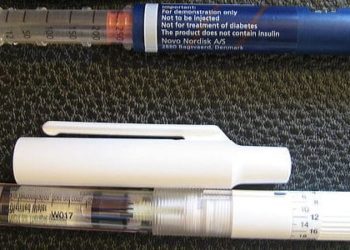Quick Take: HbA1c level as a risk factor for retinopathy and nephropathy in children and adults with type 1 diabetes
Intensive glycemic control has been shown to reduce the risk of retinopathy and nephropathy in the setting of type 1 diabetes. While prior studies have established that an elevated hemoglobin A1C (HbA1C) is an independent risk factor for diabetic complications, few studies have followed patients from the time of diagnosis. In this population-based cohort study, 10,398 children and adults with type 1 diabetes identified through the Swedish National Diabetes Registry (1998-2017) were followed up from diagnosis to study the association between HbA1c level and microvascular complications in individuals with type 1 diabetes. The mean age at diagnosis was 14.7 years. Researchers found that the risk of any retinopathy (simplex or worse) for participants with a HbA1C <6.5% compared to HbA1C 6.5%-6.9% did not significantly differ (OR 0.77, 95% CI 0.56 to 1.05, p=0.10). The risk of retinopathy was, however, increased in participants with HbA1C levels of 7.0%-7.4% (OR 1.31, 95% CI 1.05 to 1.64, p=0.02) as well as those with HbA1C levels of 7.5%-8.6% (OR 2.05, 95% CI 1.68 to 2.51, p<0.001) and >8.6% (OR 3.72, 95% CI 3.02 to 4.58, p<0.001). Researchers also found that compared to patients with HbA1C 6.5%-6.9%, the risk of microalbuminuria or worse was increased in patients with HbA1C 7.0%-7.4% (OR 1.55, 95% CI 1.03 to 2.32, p=0.03) as well as those with HbA1C>8.6% (OR 2.64, 95% CI 1.81 to 3.86, p<0.001). Similarly, the risk of macroalbuminuria was also increased with HbA1C levels >8.6% (OR 3.43, 95% CI 1.14 to 10.26, p=0.03). This study therefore shows that the risk of retinopathy and nephropathy is increased in patients with increased HbA1c levels, above 6.5%-6.9%.
Click to read the study in BMJ
Image: PD
©2019 2 Minute Medicine, Inc. All rights reserved. No works may be reproduced without expressed written consent from 2 Minute Medicine, Inc. Inquire about licensing here. No article should be construed as medical advice and is not intended as such by the authors or by 2 Minute Medicine, Inc.







